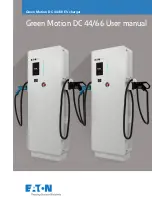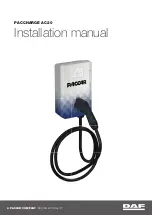
Changing a wheel
Flat tyre
You can find information on what to do in the
event of a flat tyre in the "Breakdown assis-
tance" section (
Y
page 397). Information on
driving with MOExtended tyres in the event of
a flat tyre can be found under "Breakdown
assistance" (
Y
page 398).
Vehicles with an emergency spare wheel:
in the event of a flat tyre, the emergency
spare wheel is fitted according to the descrip-
tion under "Fitting a wheel" (
Y
page 426).
Interchanging the wheels
G
WARNING
Interchanging the front and rear wheels may
severely impair the driving characteristics if
the wheels or tyres have different dimensions.
The wheel brakes or suspension components
may also be damaged. There is a risk of acci-
dent.
Interchange front and rear wheels only if the
wheels and tyres are of the same dimensions.
!
On vehicles fitted with a tyre pressure
monitor, electronic components are loca-
ted in the wheel.
Tyre-fitting tools should not be applied in
the area of the valve, as this could damage
the electronic components.
Only have tyres changed at a qualified spe-
cialist workshop.
Interchanging the front and rear wheels of
differing dimensions can render the general
operating permit invalid.
Observe the instructions and safety notes in
the "Fitting a wheel" section (
Y
page 426).
The wear patterns on the front and rear tyres
differ depending on the operating conditions.
Interchange the wheels before a clear wear
pattern has formed on the tyres. Front tyres
typically wear more on the shoulders and the
rear tyres in the centre.
On vehicles that have the same size front and
rear wheels, you can interchange the wheels
every 5,000 to 10,000 km depending on the
degree of tyre wear. Ensure that the direction
of rotation is maintained.
Clean the contact surfaces of the wheel and
the brake disc thoroughly every time a wheel
is interchanged. Check the tyre pressure and,
if necessary, restart the tyre pressure loss
warning system (
Y
page 422) or the tyre pres-
sure monitor (
Y
page 424).
Direction of rotation
Tyres with a specified direction of rotation
have additional benefits, e.g. if there is a risk
of aquaplaning. These advantages can only be
gained if the tyres are fitted corresponding to
the direction of rotation.
An arrow on the sidewall of the tyre indicates
its correct direction of rotation.
Storing wheels
Store wheels that are not being used in a cool,
dry and preferably dark place. Protect the
tyres against oil, grease, petrol and diesel.
Fitting a wheel
Preparing the vehicle
X
Stop the vehicle on solid, non-slippery and
level ground.
X
Apply the parking brake.
X
Move the front wheels to the straight-
ahead position.
X
Vehicles with manual transmission:
depress the clutch pedal fully and engage
first or reverse gear.
X
Vehicles with automatic transmission:
shift the transmission to position P.
X
Vehicles with AIRMATIC: make sure that
"normal" level is selected (
Y
page 231).
X
Switch off the engine.
426
Changing a wheel
Wh
eels
and
ty
res
Содержание E-Class Estate
Страница 2: ......
Страница 3: ......
Страница 5: ......
Страница 33: ...30 ...
Страница 123: ...120 ...
Страница 161: ...function by pressing the ECO button Y page 185 158 Overview of climate control systems Climate control ...
Страница 179: ...176 ...
Страница 277: ...274 ...
Страница 343: ...340 ...
Страница 344: ...Useful information 342 Stowage areas 342 Features 360 341 Stowing and features ...
Страница 379: ...376 ...
Страница 380: ...Useful information 378 Engine compartment 378 Service 384 Care 385 377 Maintenance and care ...
Страница 417: ...414 ...
Страница 494: ...491 ...
Страница 495: ...492 ...
Страница 496: ......
Страница 497: ......
















































